Hamao Umezawa Memorial Museum Meguro (HUM)
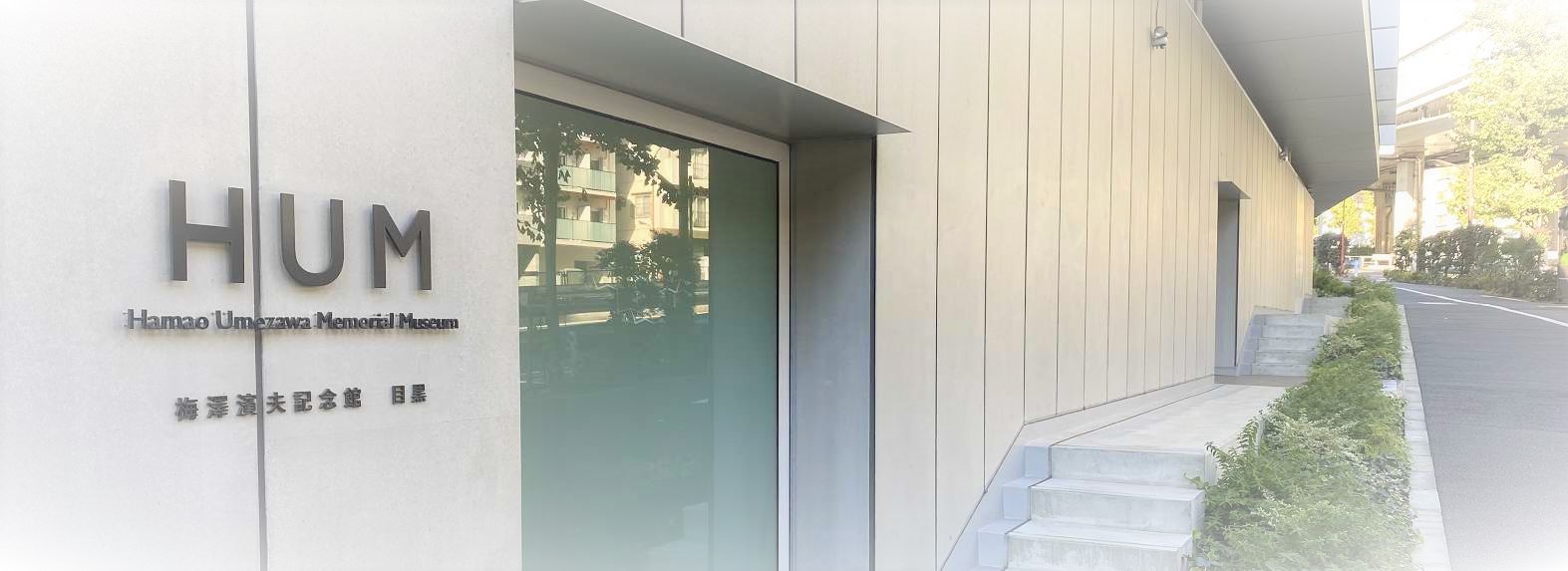
Unlocking the Miracles of Microbes and Chemistry
At the Hamao Umezawa Memorial Museum, Meguro (HUM), you can trace the path of Dr. Umezawa’s pioneering discoveries.
Can you hear the message Dr. Umezawa is trying to give us for today, and for the future?
Director’s Welcome
Our foundation has established the Hamao Umezawa Memorial Museum Meguro (HUM) to honor Dr. Hamao Umezawa—the founder of our foundation—and to promote understanding of the current Microbial Chemistry Research Society, which continues his legacy by conducting research on microbial products and related substances.
At HUM, we document Dr. Umezawa’s life and highlight his remarkable achievements through historical materials. Visitors can also gain insight into a significant chapter of Japan’s antibiotic development history. Additionally, we feature rotating exhibitions of promotional posters from various pharmaceutical companies, dating back to the era when domestically produced penicillin was first introduced.
Our museum also features an LCD monitor that showcases the latest research from the Institute of Microbial Chemistry. We have also created a special corner designed to gently introduce children to the fascinating world and importance of microbial chemistry research, as they are the ones who will shape our future. In this area, visitors can hold and touch actinomycete culture petri dishes encased in special resin and even use your smartphone to photograph microbial specimens.
We warmly invite you to explore the fascinating world of microbial chemistry with us.
Katsuhisa Yamazaki Director, Umezawa Hamao Memorial Museum
About Dr. Hamao Umezawa
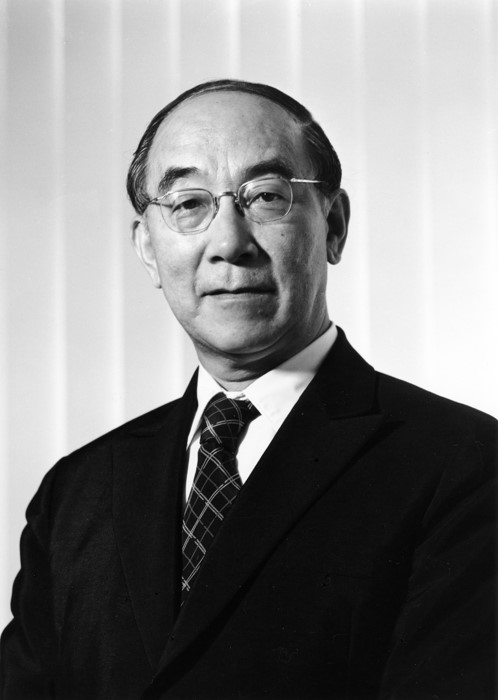
Dr. Hamao Umezawa (1914–1986) initiated his research with the first production of penicillin in Japan, which led to the discovery of kanamycin, the first antibiotic effective against streptomycin-resistant tuberculosis bacteria. Over more than 40 years, beginning in the late 1940s, he continuously pioneered new research fields. Umezawa was a trailblazer in antibiotic research in Japan and a global leader in the field.
He discovered over 70 antimicrobial antibiotics, including kasugamycin, a fungicide for rice blast disease; bleomycin, an anticancer antibiotic; and bestatin, an immune-enhancing substance. His contributions also included over 40 anticancer antibiotics, more than 50 enzyme inhibitors, and several compounds that influence the immune system, significantly advancing medicine and related fields such as pharmacy, chemistry, and agriculture.
About HUM
1.DISCOVER
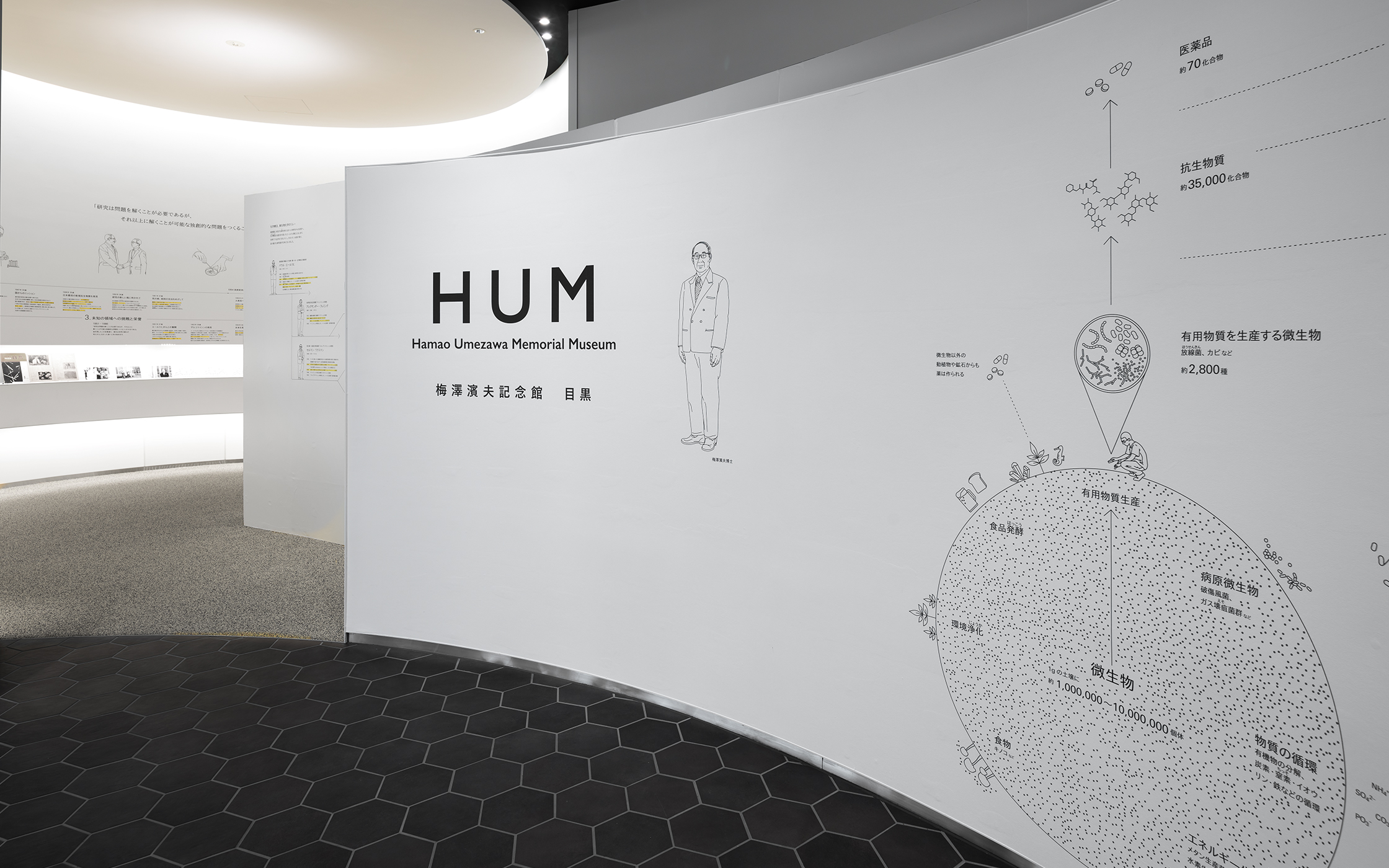
What is the microbial chemistry that Dr. Umezawa was so enthusiastic about? Discover it he
2.STUDY
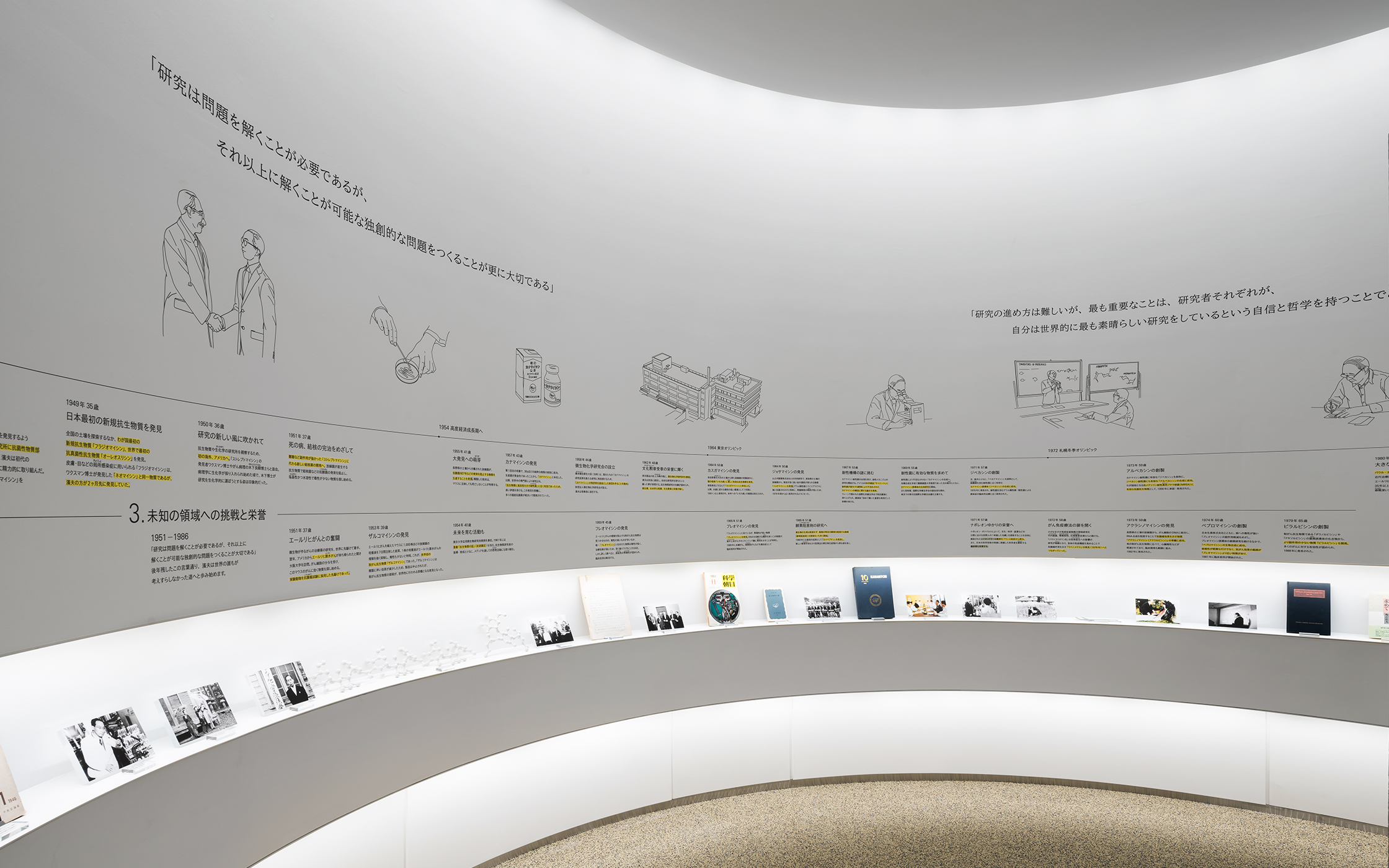
This area gives you a greater understanding of microbial chemistry and antibiotics by following the footsteps of Dr. Umezawa.
3.MEDICINE COLLECTION
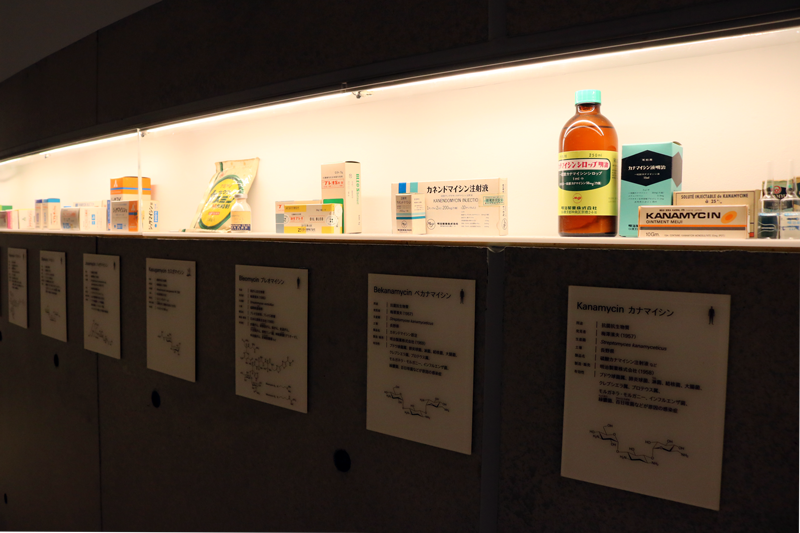
The results of endless research. This area exhibits the pharmaceuticals that were
commercialized by Dr. Umezawa and the Institute of Microbial Chemistry.
4.SHARE
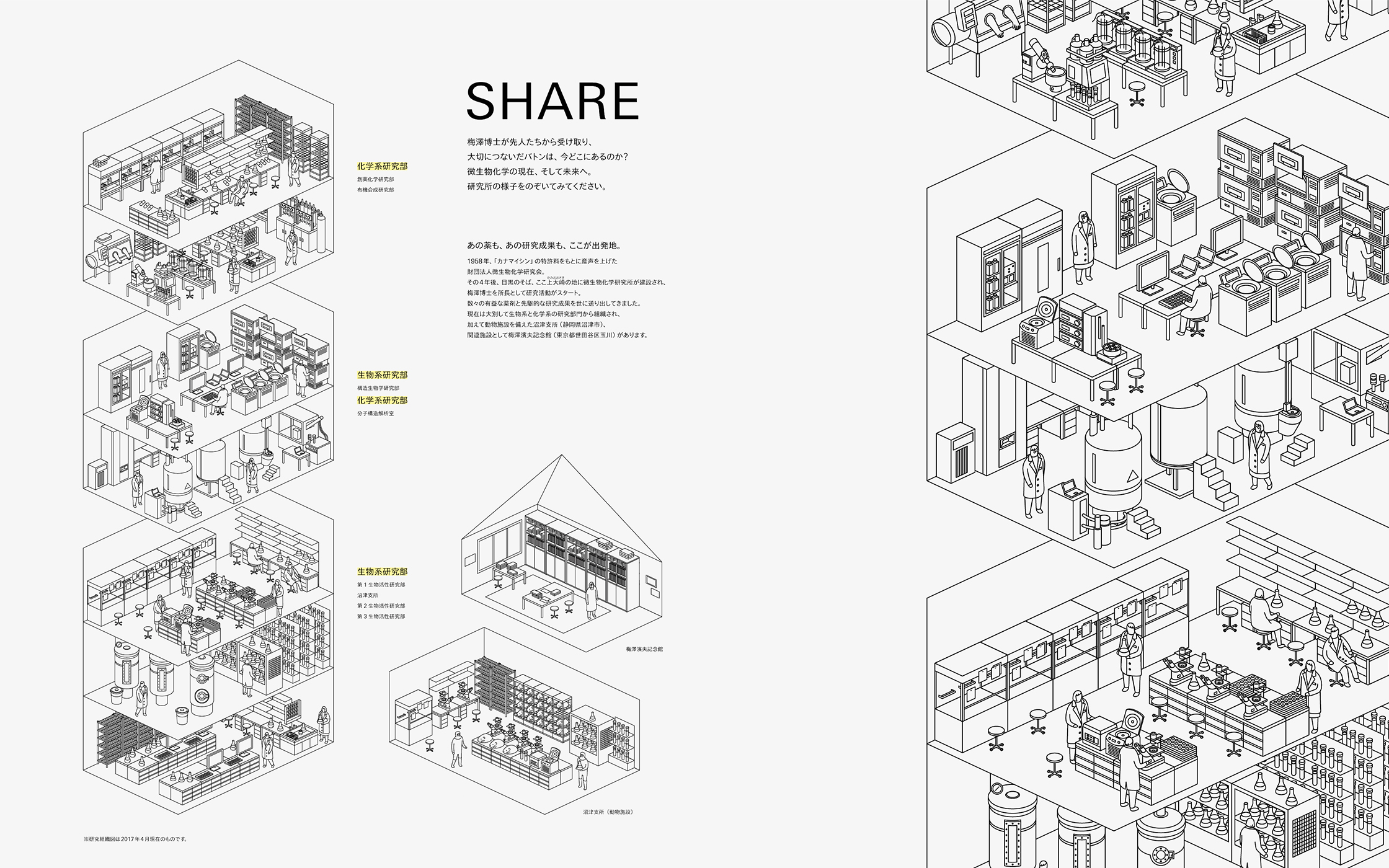
This area shares information regarding the current state of microbial chemistry and
how the achievements of Dr. Umezawa link to the future.
5.HATENA WALL
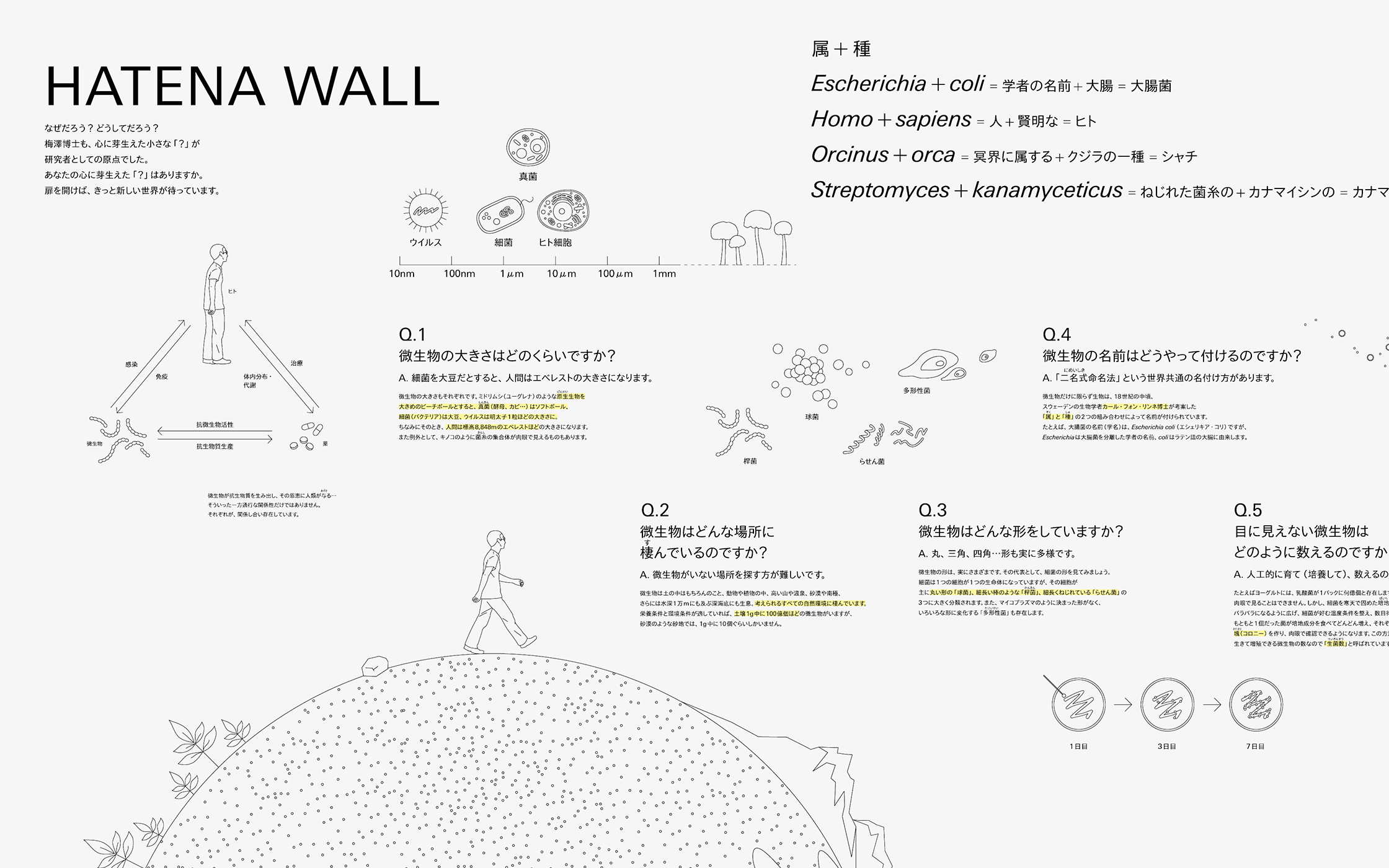
For a better understanding of microbial chemistry: this area answers the pressing
questions that may come to mind to further expand your intellectual curiosity.
※ Please see the pamphlet for details.
Map of HUM
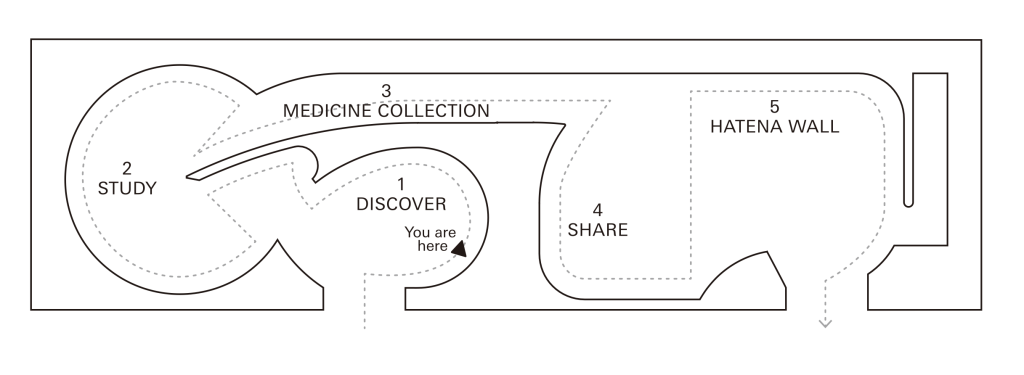
Access
Address
3-14-23 Kamiosaki, Shinagawa-ku Tokyo 141-0021
Access by train
15 min walk from Meguro Station on the following lines: JR Yamanote Line, Tokyu Meguro Line, Subway Namboku Line and Subway Mita Line.
10 min walk from Gotanda Station on the following lines: JR Yamanote Line, Tokyu Ikegami Line and Subway Asakusa Line.
Contact us and applications for tours
▶Contact us
+81-3-3441-4173 (Department of Intellectual Property)
▶Application for a tour
If you would like to take a tour, please apply using the form below.
- Opening hours: 10:00 a.m. to 4:00 p.m.
- Closed: Saturdays, Sundays, and national holidays
